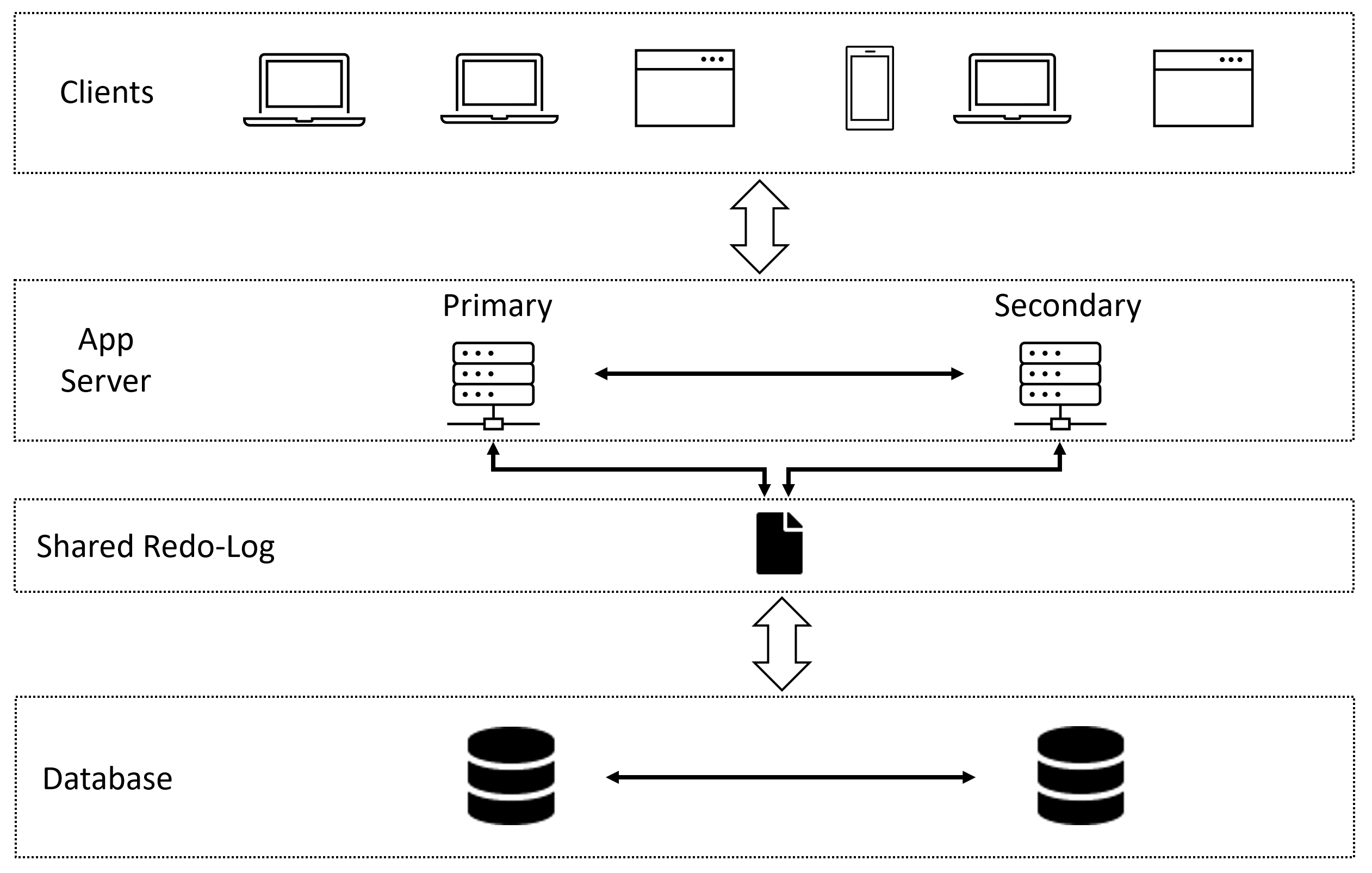Framesoft High Availability (FHA) ensures operational and accessible Framesoft solutions with minimal downtime, critical for preventing operational disruptions, financial losses, or safety risks. FHA employs redundancy to eliminate single points of failure, utilizing redundant components that seamlessly take over during failures. This strategy includes spreading service components across various locations to reduce the risk of localized failures affecting the entire system.
Redundancy is a key component of Framesoft High Availability (FHA), ensuring that there are no single points of failure. This is achieved through redundant components which can take over operations in the event of a failure. Failover mechanisms automatically switch to a redundant or standby component upon the failure of a primary component, ensuring continuity of service.
Framesoft High Availability (FHA) spread out the components of a service across multiple physical and / or logical locations to mitigate the risk of a localized event causing total system failure.
Architecture

Application Server High Availability
1. Redundancy
Multiple application server instances across diverse physical or virtual environments ensure service continuity, even with server failures. This setup supports geographic redundancy by distributing instances across multiple data centers.
2. Shared Redo-Log
The shared Redo-Log is a fundamental component of the Framesoft High Availability (FHA). The application server continuously generates Redo log entries for any transaction committed. Once a transaction is saved and committed to the database (asynchronously) it is marked accordingly in the Redo-Log.
The Redo-Log is stored in a shared storage system that is accessible by both the primary and secondary application server. This shared storage can be a network-attached storage (NAS), a storage area network (SAN), or cloud-based storage, depending on the architecture's requirements and design.
In the event of a primary application server failure, the secondary application server quickly takes over as the new primary application server, using the shared redo log to ensure it is fully synchronized up to the last successful transaction recorded before the failure. This minimizes downtime and data loss.
3. Failover Mechanism
Framesoft High Availability (FHA) incorporates automated failover to reroute traffic to operational servers, maintaining service without manual intervention.
4. Performance
The centralized Shared Redo-Log optimizes synchronization, preventing network overload and enhancing system efficiency.
Database High Availability
Achieved through clustering or replication, FHA ensures database services remain uninterrupted. Clustering allows multiple servers to act as a single service, while replication ensures real-time data availability across servers. Oracle Exadata, including Oracle RAC and Oracle Active Data Guard, supports these high availability strategies.
Integration
Framesoft High Availability (FHA) extends to Framesoft products such as:
- Framesoft Contract Repository (FCR)
- Framesoft Structured Products (FSP)
- Framesoft Fee Management (FFM)
- Framesoft OTC Platform (FOP)
- Framesoft PRIIPs KID Generator (FPG)
- Framesoft Confirmation Generator (FCG)
- Framesoft Matter Management (FLM)
- Framesoft Document Generator (FDG)
enhancing their reliability and uptime.
This streamlined overview emphasizes the essential components and benefits of FHA, ensuring clarity and focus on high availability's critical aspects for Framesoft solutions.
For more information or to engage with Framesoft High Availability solutions, contact us at
